Yes, wolves have been spotted in Door County. However, there are no established wolf packs in Door County, and wolves are transient through the county.
Known for its picturesque landscapes and rich biodiversity, Door County occasionally welcomes the presence of wolves. Join us as we delve into the facts surrounding the existence of wolves in Door County, their unique behaviors, their role in the ecosystem, and the conservation efforts to safeguard their future. Discover what to do if you encounter a wolf, learn about the methods used to monitor their populations, and explore the fascinating distinctions between wolves and their smaller cousin, the coyote. Let’s embark (get it?) on a journey of wolf appreciation and understanding.
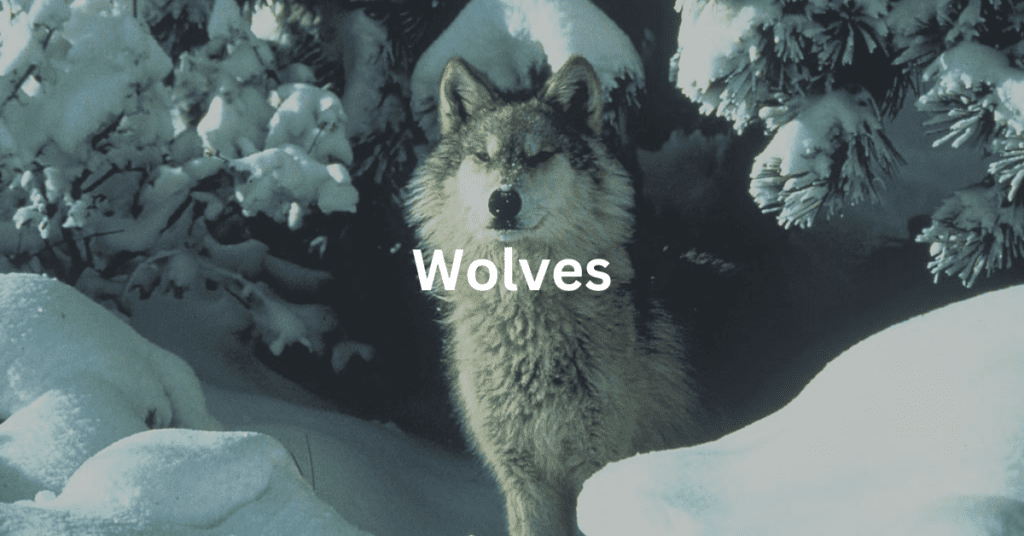
Wolves in Door County – Rare and Transient Visitors
Wolves have been sighted in the Door County area. While they are a rare occurrence, there have been confirmed reports of wolves in this region.
Regional wildlife expert Kevin Naze reports having seen a wolf in the wild. “I saw my first wild wolf — captured on video and confirmed by then-DNR wolf biologist Adrian Wydeven — in the early 2000s a few miles north of Algoma.”
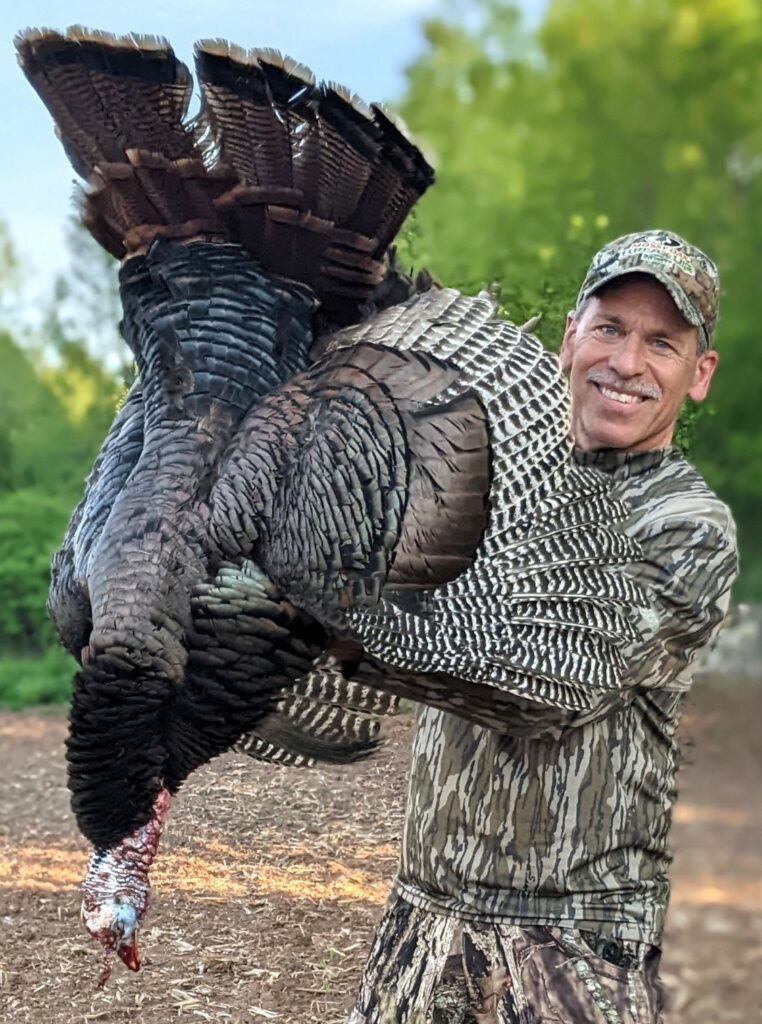
However, according to the Wisconsin Department of Natural Resources’ 2021-2022 wolf survey, no specific sightings were reported in Door County during that period. This information might lead some to believe that wolves are absent in the county, but that’s not entirely accurate.
Wolves in Door County are considered transient visitors. They are not permanent residents of the area but rather pass through occasionally. Often, the wolves seen in Door County are juvenile males on a journey to seek new territories and mates.
As Naze says, these are “younger males, passing through, likely looking for love in all the wrong places.”
Wolves in Door County are often younger males, passing through, likely looking for love in all the wrong places.
Kevin Naze
This behavior is common in the wolf population as young wolves disperse from their original packs to establish their own territories.
Steven Burns, Game Wildlife Manager for the Wisconsin Department of Natural Resources, notes that wolves travelling through Door County are often tracked animals that travel great distances: “Typically, when a wolf sighting occurs in Door County it is accompanied by a flurry of other sightings that allow you to track that individual’s movements. Occasionally the wolves that move through Door County are collared animals that the DNR maintains location data on. It is amazing to follow their movement on a map and consider the distance travelled.”
How Do Wolves Get to Door County?
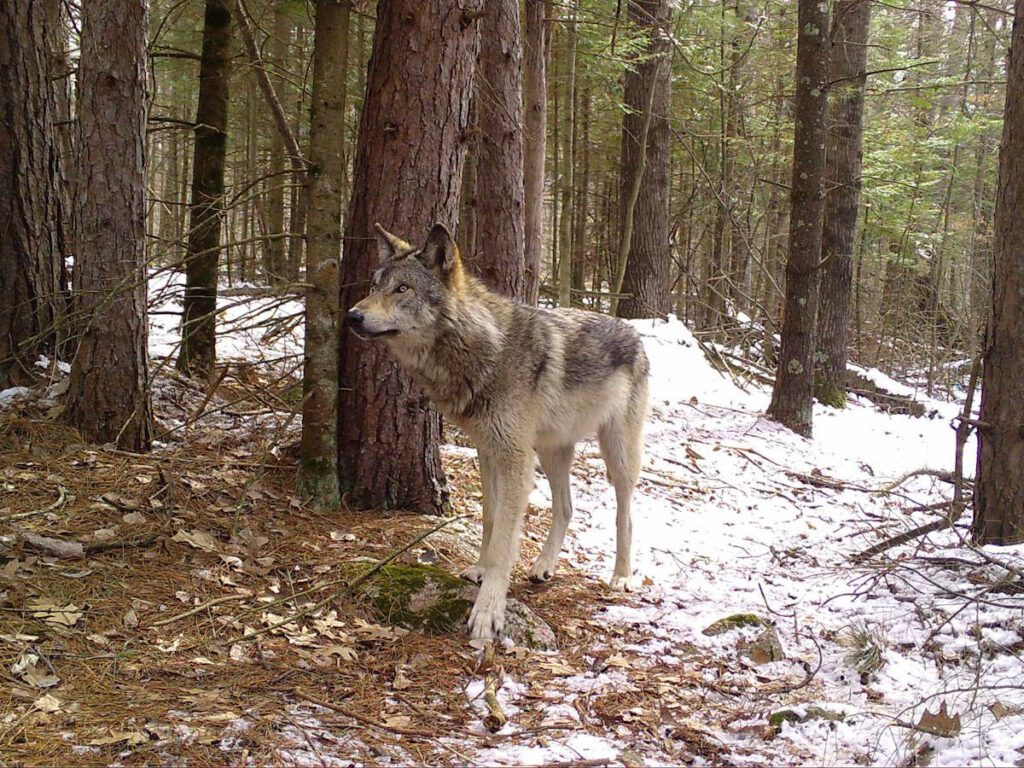
Typically, wolves enter Door County by traveling south around Green Bay from their core territory in Northwest Wisconsin. However, Burns notes that some theorize that wolves can enter Door County over the ice when Green Bay freezes over:
“An interesting theory of wolves crossing into Door County from the north (Upper Michigan) has been entertained by many through the years. Wolves can travel over 20 miles per day. During winter when large portions of the lake are frozen over new travel pathways are created. Chambers Island is only about seven miles across Green Bay from Upper Michigan and the Door Peninsula respectively; others think the Garden Peninsula and islands to the north could provide steppingstones between Door County and established packs to the North.”
Local ice fishermen have reported sightings on Green Bay.
Why Wolf Encounters Are Rare in Door County
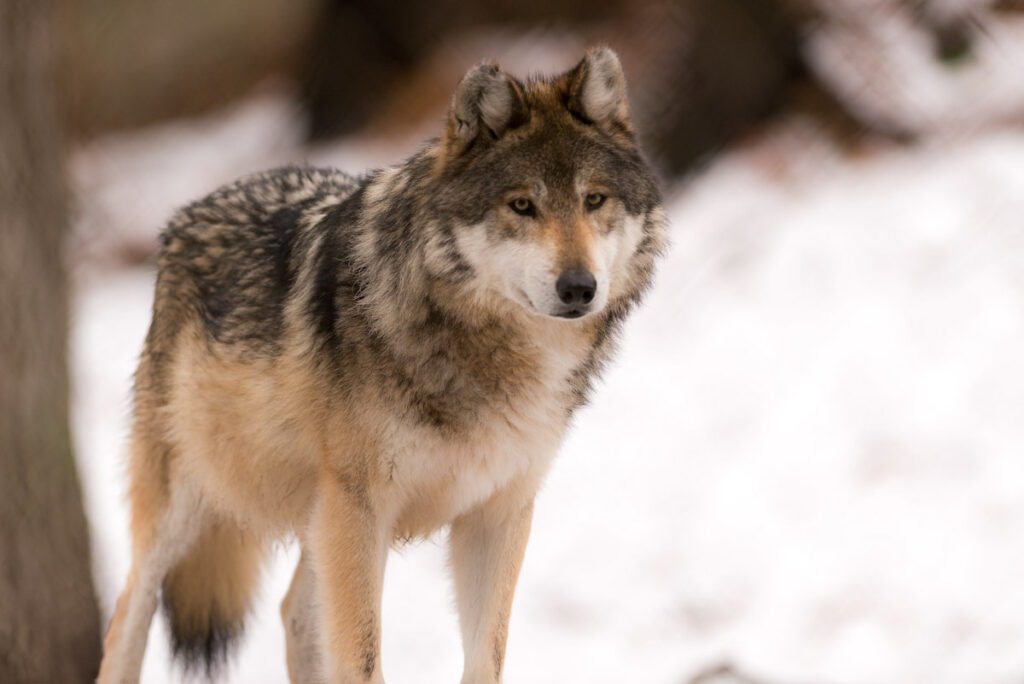
Encountering wolves in Door County is a rare occurrence, primarily due to the geographic distribution of Wisconsin’s wolf population.
Door County Is Far Afield from Wisconsin’s Core Wolf Range
The core of the state’s wolf population is concentrated in the northwest region, far from Door County. Wolves naturally inhabit areas with dense forests and ample prey, and the northwestern part of Wisconsin provides an ideal habitat for them to thrive.
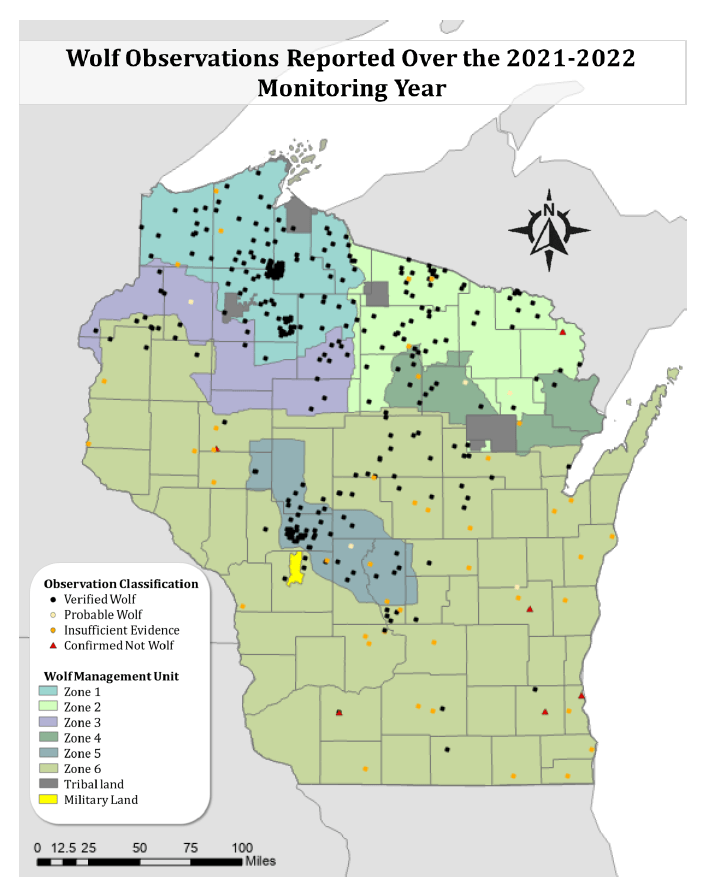
The distance from the core wolf range means that wolves must travel considerable distances to reach Door County. While some individuals might venture into the area, it remains a far-off destination from their typical territories, contributing to the rarity of sightings.
Wolves Are Elusive
Moreover, wolves are inherently shy and elusive creatures, preferring to avoid human interactions whenever possible. This behavior is deeply ingrained in their instincts and is likely reinforced by historical interactions with humans, which have led to their cautious approach. As a result, even if wolves are present in Door County, they are more likely to stay hidden and avoid populated areas to minimize encounters with people.
Door County Has Ample Cover for Wolves
Door County offers ample natural habitats that provide wolves with suitable hiding spots and cover. The county’s vast forested areas, wetlands, and other ecological features offer wolves the ideal environment to stay concealed and undisturbed. Their ability to remain hidden in such habitats further contributes to the infrequency of wolf sightings.
Monitoring Wisconsin’s Wolf Population

The Wisconsin Department of Natural Resources (DNR) employs a comprehensive approach to monitor and estimate the state’s wolf population. Using a “population abundance estimate” model, the DNR gathers data from various sources to determine wolf numbers across the state.
Winter Tracking Surveys
One of the key methods utilized by the DNR is systematic winter tracking surveys. During the winter months, trained wildlife biologists and volunteers traverse specific areas, tracking wolf prints in the snow. These surveys provide valuable insights into the distribution and movements of wolves, helping to estimate their population within designated regions.
Radio Collars
Another essential data collection method involves the use of radio-collaring technology. The DNR tracks and collars certain wolf packs, enabling them to monitor the movements and behavior of these packs more closely. By studying the activities of collared wolf packs, the DNR gains crucial information about their territory size and occupancy patterns, which is essential for estimating wolf abundance.
Sighting Reports
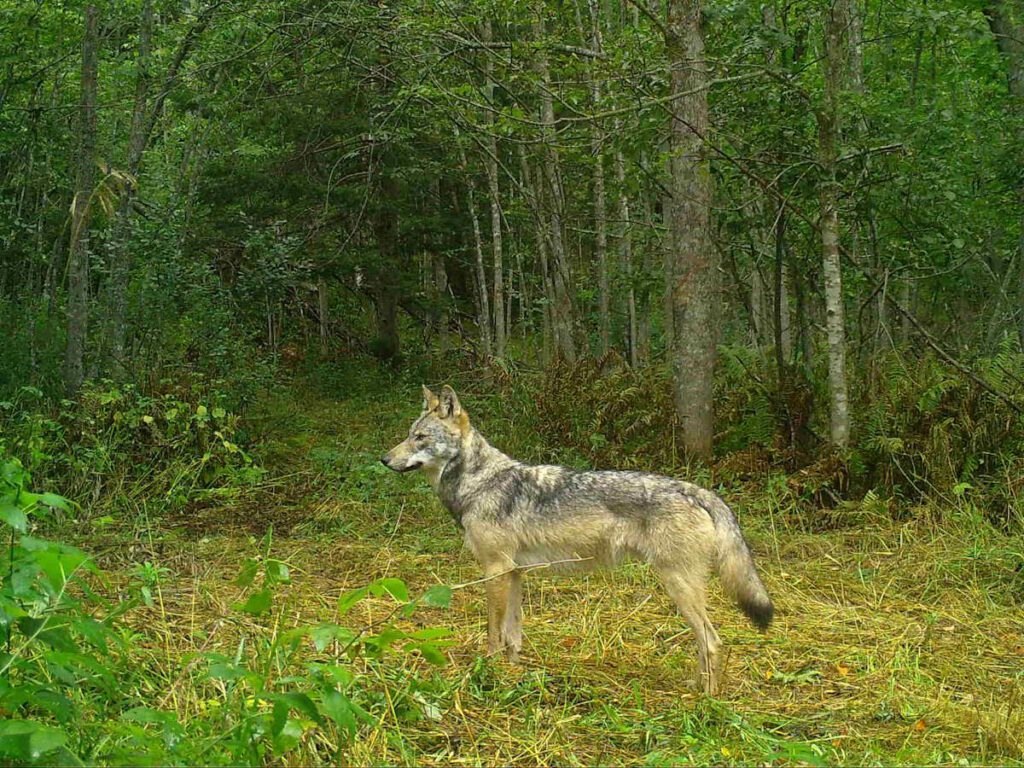
Public participation plays a vital role in the monitoring process as well. The DNR encourages the public to report any wolf sightings or encounters they may have. These observations and reports contribute valuable data that can help fill in the gaps between formal surveys and provide additional insights into wolf populations in various areas of the state.
To estimate the total area occupied by wolf packs, the DNR combines data from the winter tracking surveys with information obtained from collared wolf packs. The average pack territory size is then combined with the zone-specific average pack size to estimate the abundance of pack-associated wolves in the pack-occupied range. This data-driven approach enables the DNR to have a reliable and accurate understanding of the wolf population’s dynamics.
By employing these diverse and comprehensive monitoring techniques, the Wisconsin DNR can make informed management decisions and ensure the long-term conservation of this iconic species. The collective efforts of wildlife biologists, volunteers, and public participation are crucial in safeguarding the delicate balance between wolves, their habitats, and human activities in the state.
One interesting way for the public to observe wolf sightings is through the Snapshot Wisconsin program.
Wolves in Wisconsin: Predators of Whitetail Deer
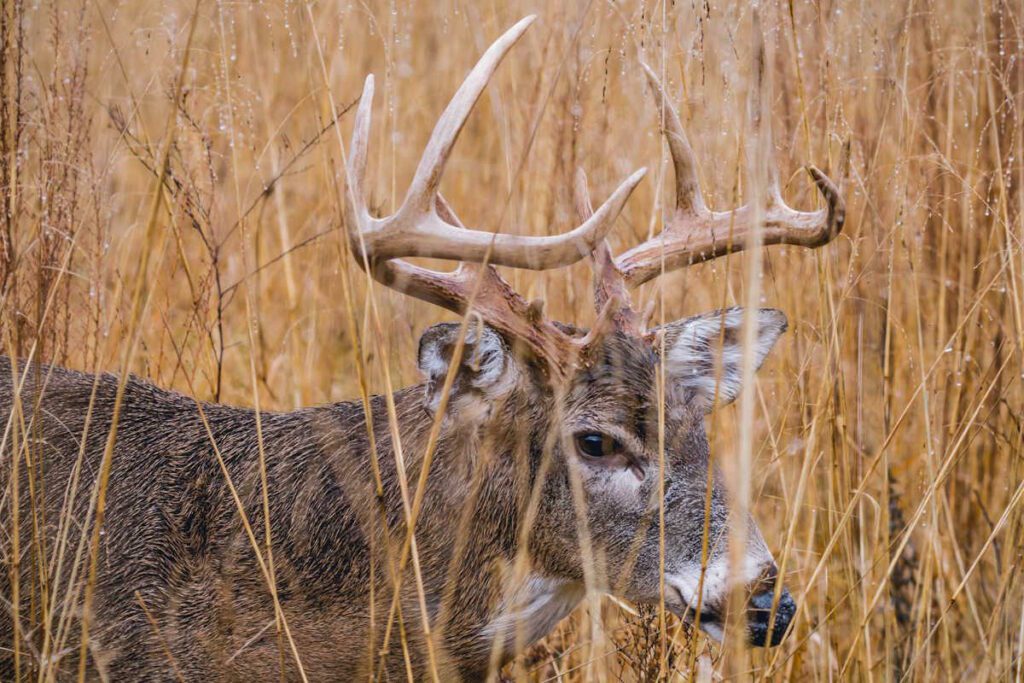
In Wisconsin, wolves are skilled predators, and one of their primary prey species is the whitetail deer. These majestic canines have adapted their hunting techniques to effectively target and take down their preferred prey.
Pack Hunting
Wolves are pack animals, and their cooperative hunting strategies make them formidable predators. They employ a combination of endurance and teamwork to chase and exhaust their prey. When hunting whitetail deer, wolves often use their remarkable stamina to pursue the deer over long distances, ultimately tiring them out before going in for the final strike.
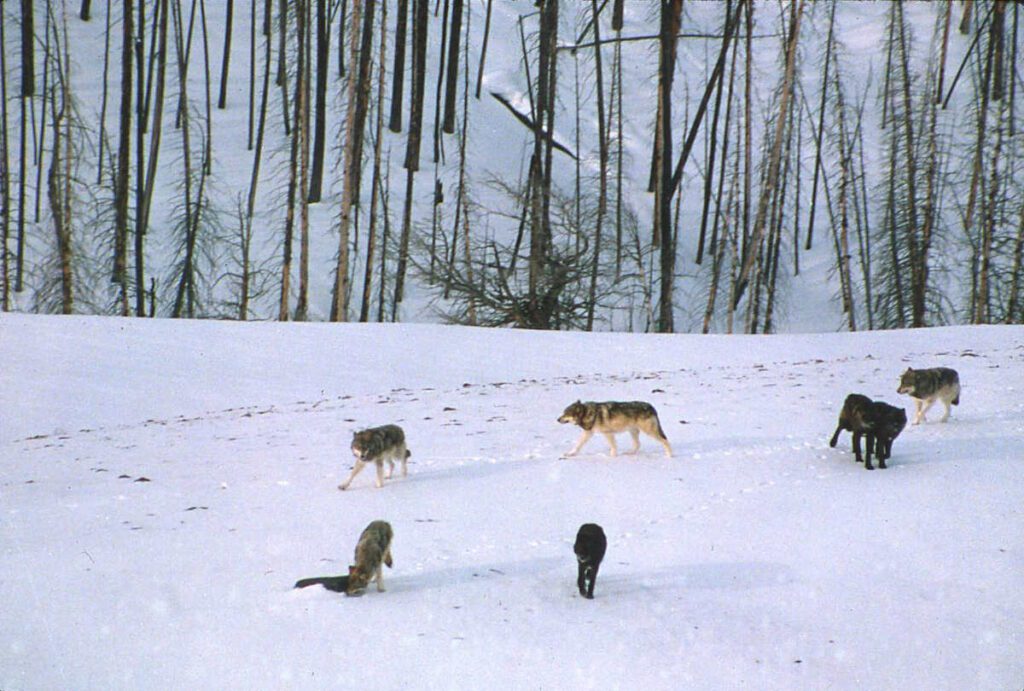
Pack hunting allows wolves to take down larger prey like whitetail deer, which would be challenging for a lone wolf to manage. The coordinated efforts of the pack ensure a higher success rate in securing a meal for all members. By targeting deer, wolves help regulate deer populations, which can be beneficial for deer herd management.
Contribute to Herd Management
Balanced deer herd management is essential for maintaining healthy ecosystems. When deer populations become too large, they can cause excessive browsing on vegetation, leading to habitat degradation and potentially negatively impacting other wildlife species. By preying on deer, wolves play a crucial role in controlling their numbers and promoting a healthier balance between predators and prey in the ecosystem.
Additionally, wolves’ hunting behavior often targets weaker or older deer, which can have underlying health issues or lower reproductive success. By culling these individuals from the population, wolves inadvertently contribute to enhancing the overall genetic fitness of the deer population, allowing for healthier and more resilient herds in the long run.
Addressing Wolf Depredation: Balancing Conservation and Livestock Protection
In recent years, the issue of wolf depredation on livestock has been a concern in Wisconsin. During the 2021-2022 monitoring period, the Wisconsin Department of Natural Resources (DNR) confirmed a total of 50 incidents of wolf depredation to livestock on 43 different farms. Additionally, there were 18 incidents of wolf threats to livestock during the same period, highlighting the potential impact of wolf presence on local farming communities.
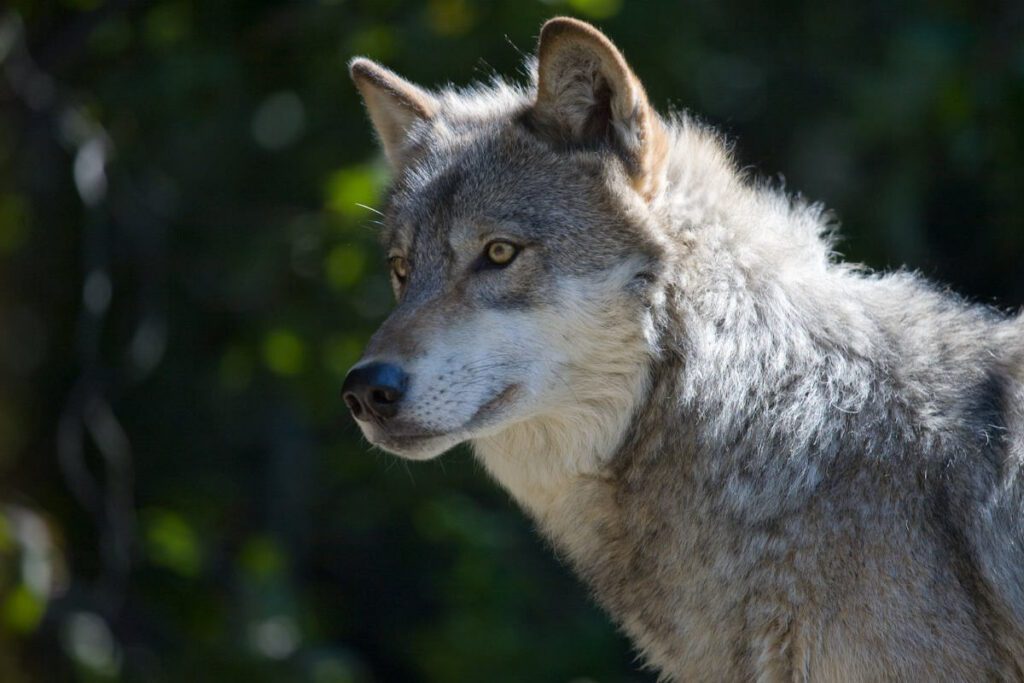
Furthermore, the DNR also recorded 22 incidents of non-livestock depredations and 5 incidents of non-livestock threats during the monitoring period. These incidents underscore the broader implications of wolf-human interactions beyond just livestock concerns.
To address wolf depredation, the Wisconsin DNR employs a combination of lethal and non-lethal means. The objective is to find a balanced approach that ensures both the conservation of this iconic species and the protection of agricultural interests.
Lethal means involve the targeted removal of wolves involved in depredation incidents. The DNR carefully assesses each case to determine the necessity and appropriateness of lethal action. Such decisions are based on factors such as the severity and frequency of depredation, as well as the potential impact on the local wolf population.
Non-lethal methods are equally important and focus on preventing conflicts between wolves and livestock in the first place. Techniques such as using guardian animals (e.g., livestock guardian dogs), employing electric fencing, and employing scare tactics help deter wolves from approaching livestock areas, reducing the likelihood of conflicts.
By utilizing both lethal and non-lethal means, the Wisconsin DNR aims to manage wolf depredation in a manner that supports the coexistence of wolves and farmers. This approach recognizes the ecological significance of wolves in the ecosystem while acknowledging the legitimate concerns of livestock owners.
What to Do if You Encounter a Wolf in Door County
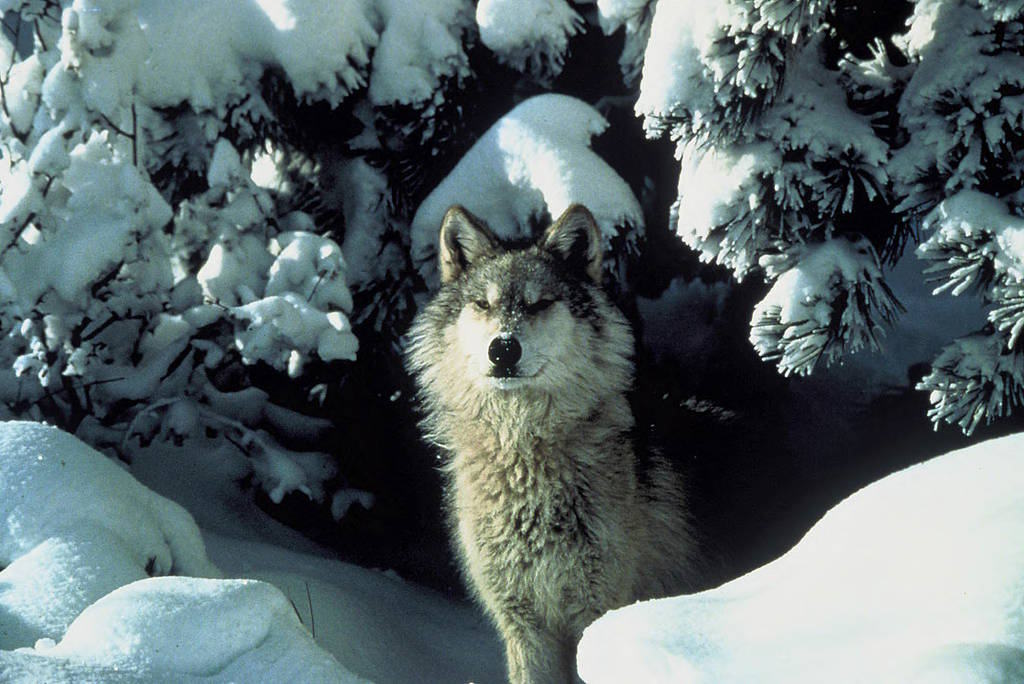
While the chances of encountering a wolf in Door County are rare, it’s essential to be prepared and know what to do in such a situation. Wolves are naturally shy and elusive creatures, and they typically avoid human interactions. However, if you do happen to spot a wolf during your time in Door County, here are some guidelines to follow:
- Remain Calm: If you come across a wolf, try to stay calm and avoid sudden movements or loud noises. Give the wolf plenty of space and do not approach or attempt to feed it.
- Observe from a Distance: Use binoculars or the zoom on your camera to observe the wolf from a safe distance. Do not attempt to get closer for a better look, as this may stress the animal and lead to unintended consequences.
- Do Not Run: Running can trigger a chase response in wolves, as they are natural predators. Avoid running away from the wolf and back away slowly if it appears to approach you.
- Protect Pets: If you are walking with pets, keep them close and under control. Wolves may perceive small animals as potential prey, so it’s essential to keep them leashed and near you.
- Report the Sighting: If you do have the opportunity to observe a wolf, consider reporting the sighting on the Wisconsin Department of Natural Resources (DNR) website. Your observation can contribute valuable data to ongoing monitoring efforts and help authorities better understand wolf populations and movements.
- Respect Their Space: Remember that wolves are a protected species in Wisconsin, and it is illegal to harm or harass them. Appreciate the rarity of such an encounter and respect the wildlife’s right to their natural habitats.
Encountering a wolf in Door County can be an awe-inspiring and unique experience. By following these guidelines and reporting your sighting, you can contribute to the conservation efforts and gain a deeper appreciation for the natural beauty and biodiversity of this region. Always remember to prioritize your safety and the well-being of the animals you encounter while exploring the wild landscapes of Door County.
Can You Hunt Wolves in Door County?
In recent years, there have been wolf hunting seasons in Wisconsin, allowing licensed hunters to pursue this iconic species. However, the legal status of wolf hunting in the state underwent a significant change following a federal district court ruling on February 10, 2022.
The ruling determined that wolves are currently listed as an Endangered Species under federal law, effectively putting a halt to wolf hunting in Wisconsin. The decision came after a U.S. Fish and Wildlife Service determination that removed the gray wolf from the Federal List of Threatened and Endangered Species was vacated. As a result, wolves in Wisconsin are once again protected under federal law, and hunting them is currently prohibited.
Despite the ban on wolf hunting, multiple challenges to the existing laws are pending. These challenges are taking the form of lawsuits and legislative efforts aimed at reconsidering the wolf’s protected status and potentially reinstating hunting opportunities in the future.
The ongoing debates and legal battles surrounding wolf hunting demonstrate the complexities of wildlife management and conservation. While some argue that controlled hunting can help manage wolf populations and mitigate depredation issues, others advocate for maintaining robust protections for this endangered species.
For now, it is essential for visitors and residents in Door County to be aware of the current federal protections in place for wolves. As the legal landscape continues to evolve, staying informed about any changes in regulations and laws regarding wolf hunting will be crucial.
In conclusion, while wolf hunting is currently not permitted in Door County or any other part of Wisconsin, the situation remains fluid, with legal challenges and legislative discussions shaping the future of wolf conservation and management in the state. As stewards of the environment, it is vital for individuals to stay informed and engaged in these matters, ensuring the long-term preservation of wolves and the delicate balance of wildlife in Wisconsin’s diverse ecosystems.
What Kind of Wolves Are in Door County?
In Door County, the wolves that have been sighted are none other than the magnificent gray wolves (Canis lupus). Gray wolves are one of the most iconic and well-known species of the canid family, captivating the imaginations of people worldwide.
Appearance
Gray wolves are large carnivores with a powerful and robust build. They typically have a distinctive coat, which can vary in color from shades of gray to brown, with some individuals having a reddish tinge. Their fur can be long and thick, providing insulation during harsh winters.
Size
Adult gray wolves generally measure between 4.5 to 6.5 feet in length, from nose to tail, and stand approximately 2.5 to 3.5 feet tall at the shoulder. Males are typically larger than females, with weights ranging from 70 to 130 pounds, while females weigh slightly less, usually between 60 to 100 pounds.
Habitat
Gray wolves have an extensive distribution, inhabiting various ecosystems ranging from forests and grasslands to tundra and mountains. While historically prevalent across North America, Europe, and parts of Asia, their range has significantly diminished over time due to human activities and habitat loss.
Diet
Gray wolves are carnivorous predators, and their diet mainly consists of ungulates such as deer, elk, and moose. They are opportunistic hunters and will also prey on smaller mammals, such as beavers, rodents, and hares, when larger prey is scarce. Wolf packs are skilled hunters and work together to bring down their prey, using their intelligence, communication, and coordinated tactics.
Social Structure
Wolves are highly social animals and typically live in family groups known as packs. Packs are led by an alpha pair, usually the breeding male and female, and may include their offspring from previous years. These family units collaborate to defend their territory, care for their young, and hunt cooperatively.
Communication
Wolves are known for their sophisticated communication skills. They use a combination of vocalizations, body language, and scent marking to convey information within the pack and communicate with neighboring groups. Howls are one of the most recognizable vocalizations of wolves, serving as a means of long-distance communication and territorial assertion.
Conservation Status
Gray wolves were once extensively persecuted, leading to significant population declines in many regions. However, conservation efforts have helped some populations recover, and they are currently listed as a species of “Least Concern” by the International Union for Conservation of Nature (IUCN). In some areas, including Wisconsin, they were previously delisted from the federal list of endangered species but were later granted protection again.
How To Tell the Difference Between a Wolf and a Coyote
In regions like Door County where both wolves and coyotes may be present, it’s essential to be able to differentiate between these two canid species.
Burns notes that other species of canid are frequently mistaken for wolves: “Most reported wolf sightings are domestic dogs or coyote mistaken as wolves. From a distance when sense of scale can be off, or in difficult sighting conditions such as low light, the subtle differences between wolves and coyotes can be difficult to discern.”
Most reported wolf sightings are domestic dogs or coyote mistaken as wolves.
Steven Burns
While they share some similarities, several key characteristics can help you tell them apart:
Size and Build
One of the most noticeable differences between wolves and coyotes is their size and build. Wolves are significantly larger and more robust than coyotes. As mentioned earlier, adult gray wolves can weigh between 70 to 130 pounds, while adult coyotes generally weigh between 20 to 50 pounds. Wolves have a more substantial and stockier appearance, with longer legs and larger paws compared to coyotes.
Coat Color and Texture
The coat color and texture also differ between the two species. Wolves typically have a range of gray and brown shades, while coyotes often have more variable fur coloration, including gray, brown, and reddish tones. Additionally, coyotes tend to have a more uniform coat color, whereas wolves may display more distinct patterns and markings.
Tail
The tail is another useful feature for distinguishing between wolves and coyotes. A wolf’s tail is bushier and more substantial, often carried low when they are relaxed. In contrast, a coyote’s tail is generally thinner and held in a more relaxed “U” shape.
Ears
Pay attention to the ears. Wolves have relatively shorter and rounder ears compared to coyotes, which have more pointed and upright ears.
Behavior
While it may not be easy to observe behavior from a distance, wolves and coyotes have different social structures and hunting behaviors. Wolves are highly social and typically live in family packs, whereas coyotes are more solitary or form smaller family groups. Additionally, wolves often hunt larger prey, such as deer, while coyotes primarily target smaller mammals and are more likely to scavenge.
Vocalizations
Both wolves and coyotes are known for their distinctive howls and other vocalizations. However, wolf howls tend to be deeper and more resonant, while coyote howls are higher-pitched and often described as yipping or yodeling.
Habitat
Wolves are more commonly associated with larger, remote wilderness areas, while coyotes are highly adaptable and can be found in a variety of habitats, including suburban and urban environments.
Frequently Asked Questions
Yes, wolves have been sighted in Door County, but they are rare and transient visitors.
No, currently, wolf hunting in Wisconsin is prohibited due to federal Endangered Species listing.
Wolves primarily prey on whitetail deer, but they may also target smaller mammals like beavers and rodents.
Summary: Wolves in Door County
- Wolves have been spotted in Door County, but they are rare and transient.
- The Wisconsin DNR uses a “population abundance estimate” model to monitor wolf numbers.
- Wolves in Wisconsin primarily prey on whitetail deer.
- Wolf depredation incidents on livestock and non-livestock have been documented.
- Gray wolves are the species found in Door County.
- Wolf hunting in Wisconsin is currently prohibited due to federal Endangered Species listing.
- To report wolf sightings, use the Wisconsin DNR website.
- Distinguishing wolves from coyotes involves size, appearance, behavior, and habitat differences.
